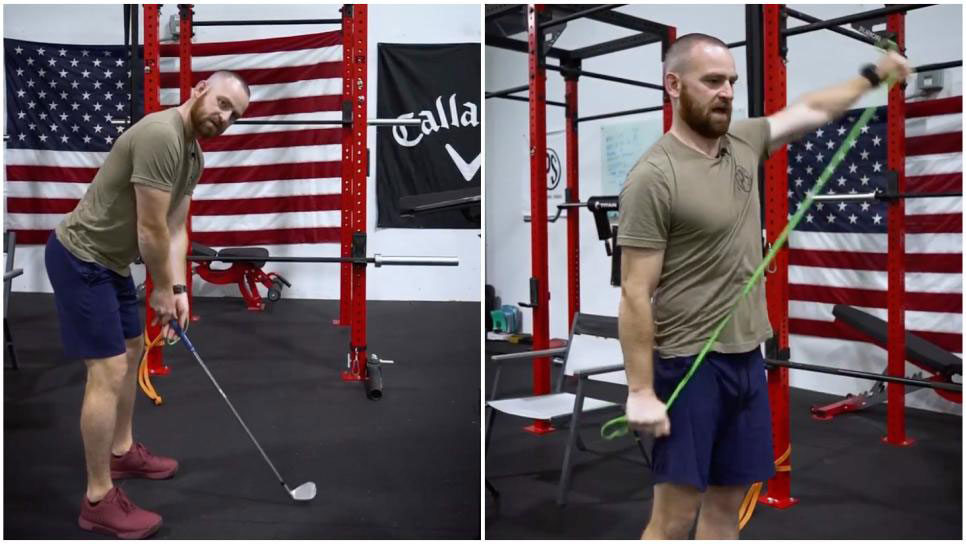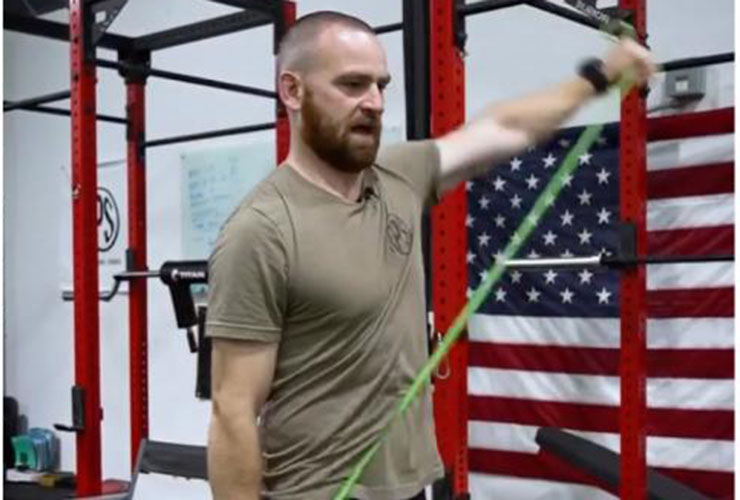Kevin Duffy
Whenever amateur golfers are facing issues with contact or consistency in their swing, they almost always attribute the problem to a very small part of their golf swing rather than looking at the most obvious, and simple, solution.
A big problem for many golfers is getting their spine into proper positioning at set-up and maintaining that position throughout the swing.
The most common issue golfers have when it comes to posture is rounding their shoulders too much, trainer Kevin Duffy says. And when you think about it, it’s easy to see why.
Most of us are sitting at our desks in poor posture for at least eight hours a day, add that to the poor posture we maintain in the car and sleeping, and that’s another eight to 10 hours of us conditioning ourselves to stay in bad positioning.
“You can’t out-train the desk,” Duffy says Kevin Duffy, “but there are a couple of things players can do to improve their posture both in their swing and in their day-to-day lives.”
Duffy’s first recommendation is to avoid extended periods of time in postures that aren’t helpful toward your overall goal. One way to achieve better posture during your workday is to get a standing desk. Another way is to incorporate a couple of quick walks or stretching, like the ones below, into your daily routine.
View this post on Instagram
Duffy’s band exercises will combat the effects of prolonged sitting and help you maintain a better spine position throughout your swing.
Duffy recommends keeping a light band at home that you can use to do 10-12 reps a couple times a day.
He also says the key to nailing these easy exercises is completing them in a balanced position with a neutral spine. If you find that you’re swaying or rounding your shoulders, try using a lighter band or no band at all. The goal here, Duffy explains, is to open up your chest and get out of the rounded position so many of us find ourselves in throughout a majority of our day.
His next recommendation for improving golf posture, is to check that you’re hip hinging into your set-up.
Most golfers use their spine and round their shoulders when addressing the ball, but in reality they really need to be using their hips, Duffy says.
To practise getting into proper golf, stand straight with your knees slightly bent and think about hinging or sliding your hips back a few inches.
When practising this, it’s important to note that you want to keep your spine relatively straight. Too much tilt in your pelvis will create an exaggerated arch in the back which can be just as much of a problem when rotating as too much rounding in the shoulders.
“When you improve your position at address, you’ll improve your ability to rotate,” Duffy says.

Kevin Duffy
Learning to hip hinge will help you create a bigger turn in your backswing, improve your weight transfer and allow you to incorporate the larger muscles you need to create more power in your swing.
Duffy’s final recommendation is to learn diaphragmatic breathing.
“Chest breathing causes a shortening of the traps and can increase stress,” Duffy says.
This is bad for two reasons: not only will you have more tension in your trapezius muscles, but Duffy explains that the body stores stress in unique ways and that can wreak havoc on your posture and back health as well. Common stress stores for females are in the upper shoulder blades and trapezius muscles, while male stress stores are typically in the low back.
Duffy suggests using a simple box breathing technique to achieve proper belly breathing. Breathe in for four seconds, hold for four seconds, release for four seconds and hold again for four seconds before starting the cycle over again. Placing your hands on your stomach as you practise this can help you focus on breathing from your diaphragm as opposed to your chest.
Belly breathing is key because it reduces tension in players’ traps and back while also helping them regulate their nervous system when they’re under stress, Duffy says.









